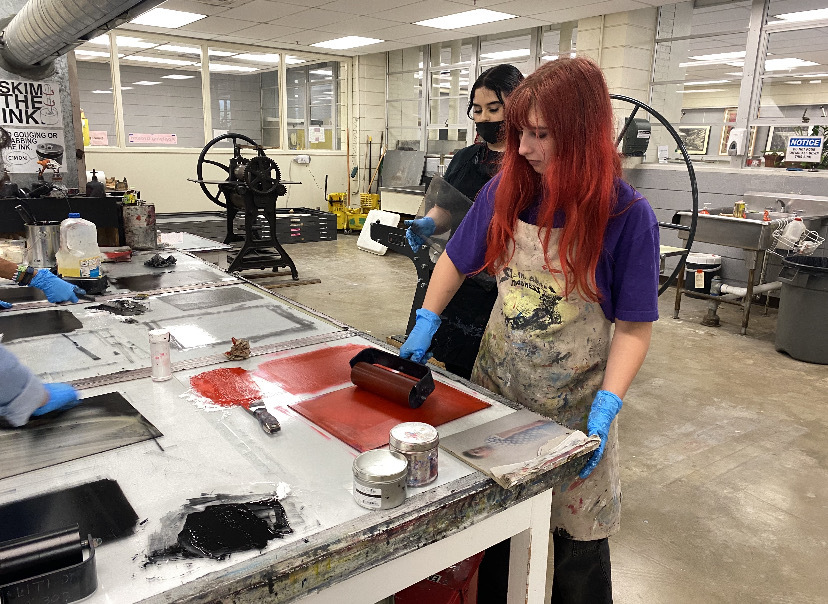ST.ART program offers prospective art students chance to expand on art skills, find home at UT
September 2, 2022
Student work hangs on the walls of UT’s Visual Arts Center, bringing life and vibrancy to the white walls of the gallery. A portrait titled “Perdóname” hangs among the other works, showing Holden Aramburu in the center of a strikingly red background, surrounded by four younger versions of himself as they lean against him, sit alongside him and embrace him.
This exhibit shows off the results of the Department of Art and Art History’s summer ST.ART Pre-College Art and Design program, where UT graduate art students and professors expose high school students to career possibilities through regular interactions with local artists, designers, historians, curators and more. While building on their skills and creating new works, the young artists worked to create art that would later be presented at the end-of-summer ST.ART exhibition at the VAC.
Amelia Fleming, founding director of the program, said that at its core, ST.ART was created to give students a chance to hone in their artistic skills and learn more about college life.
“(ST.ART) exists to create opportunities for (high school students) to experiment with different processes in art and design and to see if they’re interested in careers or college majors in art and design fields,” Fleming said. “It’s a program that is intended to have a lot of fun!”
In addition to Fleming, the program was facilitated by program assistants, fine arts students that supervised the campers throughout the summer. Fabiana Muñoz, program assistant and studio art sophomore, described the role as being a mentor for the students.
“You’re there to help them be immersed in the college experience,” Muñoz said. “We planned out activities, we had studio time with them and (gave) them encouragement or feedback.”
The exhibit in the VAC was organized by the students in the ST.ART program, providing hands-on experience in planning out an exhibit. Muñoz said she saw how these opportunities impacted the high school students.
“Having their work in a big gallery gives them confidence and validates the work they do,” Muñoz said. “They have this pressure to impress, and I think it is rewarding to see your work polished and displayed in a gallery.”
Fleming also shared that the sense of community among students and faculty made up another important and powerful aspect of the camp. She said she wanted to make sure all participants felt supported and safe when being expressive and artistic.
“I want students, staff and faculty working with the program to feel like they’re part of the community — to feel comfortable to be who they want to be and express themselves in an artistic way in a safe space,” Fleming said. “This past summer, my favorite part of the program (was) that aspect of community.”
Beyond connecting with students, the program assistants for the program also said they grew in their skills as leaders over the summer.
“I gained some assurance and confidence in myself as a leader and mentor,” Muñoz said. “I would have to assume responsibility and lead them through campus life, and there were some unexpected problems in resident life that I had to conquer and that definitely helped me.”
Aramburu said the collaboration between the program assistants and the students also served to encourage students to create and pursue art.
“Getting to talk to all the college students and seeing (their happiness) with studying at a university and finding career options was very empowering,” Aramburu said. “I’m not going to be the stereotypical starving artist.”



